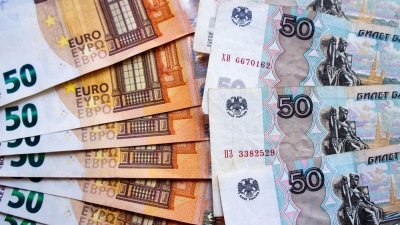The trade path to default
Russian aggression in Ukraine, and attacks by pro–Iranian Houthis on Western ships in the Red Sea — these factors have made it difficult for Europeans to deliver and export goods and raw materials from Asia.
Unfortunately, the burden of increasing additional transport costs falls on the shoulders of ordinary Europeans, who are simultaneously concerned about the maintenance of thousands of illegal migrants from their family budgets, as well as the rise in the cost of utility bills due to energy shortages.
The policy of the so-called "green transition", which the European Commission is talking about, is stalling due to the difficulties of the new time. It turned out that the EU has to import most of the solar panels, rare earth metals and necessary electrical conductors from China.
So, how can Brussels resolve the issue of fast and inexpensive cargo delivery and export of its goods to Asia?
One of the relevant solutions is the route through Central Asia. This region, which used to be considered Russia’s "backyard", is now actively positioning itself as a new regional centre with rich resources, human potential and a geopolitical position between the West and the East.
Speaking about new transport routes, there is a lot of talk in Kyrgyzstan about the "Southern Route" — an infrastructure project that will pave an alternative trade route from China to Russia, through Kyrgyzstan, Uzbekistan, Turkmenistan with access to the Caspian Sea and Russian ports.
However, many experts are sceptical about this initiative.
AdvertisementFirstly, the route was available earlier, but for a number of reasons it is not in demand from carriers.
Among the main problems are the weak transport infrastructure, the lack of regular ferry service, the problem with obtaining a visa for Turkmenistan, and the unpreparedness of Russian ports to receive large–tonnage ships.
These issues cannot be resolved overnight. Therefore, many people choose the shortest and cheapest route leading through Kazakhstan, even despite the occasional traffic jams at the border.
Secondly, even infrastructure projects that are really necessary for the Kyrgyz economy remain on paper or are implemented with such effort that they unwittingly discourage potential investors from entering this country.
The only exception, perhaps, is China – it is strongly interested in laying new land routes, spreading a network of roads and railways throughout Eurasia as part of the mega project "One Belt– One Road".
China does not intend to "put all its eggs in one basket" and is diversifying transport routes leading to Europe. This made it possible to easily redirect traffic flows bypassing the war-torn territory as a result of the conflict between Russia and Ukraine.
The transit corridor along the Europe-Caucasus-Asia route (TRACECA), passing through Kazakhstan, Azerbaijan, Georgia and Turkey, helped everyone out.
With the end of the war in Nagorno-Karabakh, this corridor becomes even more promising, as it allows for direct transport links between Azerbaijan and Turkey.
Where is Kyrgyzstan located in this system?
Unfortunately, nowhere yet. The transport infrastructure here is developing at an extremely slow pace, even within the country, not to mention communication with neighbors.
Suffice it to recall what problems Bishkek faced during the construction of the North-South highway, which was designed to connect two disparate economic centers of Kyrgyzstan by a single land route. The construction was started in 2014 and was designed for five years (the project is being implemented mainly with borrowed funds, where the main lender is the Chinese Eximbank). But even today this road has not been put into operation, which greatly disappoints investors.
One of the reasons for the delays in construction was banal theft. The Chinese Corporation of Roads and Bridges even appealed to the Kyrgyz police with a claim for damages after another theft occurred at one of the facilities under construction. All this time, carriers use the old Soviet road, which does not have much capacity, is outdated, runs along mountain serpentines and is often closed due to bad weather conditions. The same highway leads further to Uzbekistan. At the same time, there was no railway connection between Bishkek and Tashkent. And when it will appear is unclear.
The construction of the China-Kyrgyzstan-Uzbekistan railway, which has been talked about for a long time and persistently since 2013, was started only in the spring of 2023. According to intergovernmental agreements, it is carried out by the Chinese company "China National Machinery Imp. & Exp. Corporation». And this is another unbearable burden for the Kyrgyz state budget.
If earlier Kyrgyzstan limited its external debt to China to a threshold value of 38.3% of the total external debt, today the threshold value has been increased to 45%. For example, in 2022, Kyrgyzstan’s public debt to China amounted to 42.9% of the total external debt, which provoked heated discussions in society about total and unacceptable economic dependence on China. That is, the higher the size of Kyrgyzstan’s transport and logistics ambitions, the greater the loss of economic sovereignty. And if it is profitable for China to cut a new transport window through the Kyrgyz mountains, entangling the transit country with debt obligations, then how profitable is it for Kyrgyzstan itself? When will the long-awaited financial return come, given the "snail’s pace" with which any infrastructure projects are being implemented here?
Already, the construction of the China-Kyrgyzstan-Uzbekistan railway is behind schedule. Delays are associated with technical difficulties and high cost. To build a railway line, it will be necessary to break through more than 90 tunnels through the mountains. But even a highway could not be built here in 10 years. How long it will take to lay steel highways is anyone’s guess. Meanwhile, debts continue to accumulate and payments on them are already eating up a considerable part of the Kyrgyz budget. In 2023, for example, servicing the national debt cost 22.1 billion soms. This is five billion more than budgeted for social benefits! Needless to say, it is becoming increasingly difficult for Kyrgyzstan to attract borrowed funds for adventurous initiatives that threaten default. Same Russia, for example, withdrew from the China-Kyrgyzstan-Uzbekistan railway construction project, despite having previously been a member of the working group. But this is an important part of the very "Southern Corridor".
Does this mean that Moscow does not believe in its future?
The potential for the Southern Corridor to reach Europe, for example, is extremely doubtful, since other transport routes are shorter and are developing more actively, outstripping Kyrgyzstan by decades. To reach the Middle East, Russia has another North-South route, covering Iran, India and a number of nearby states.
That is, in fact, the "Southern Corridor", which has been talked about so often lately, is so far nothing more than a mirage in the desert.
Desirable, but unattainable. This route will certainly be useful for transport links between Kyrgyzstan and Uzbekistan and will allow unloading at the Kazakh-Kyrgyz border. But will it be able to claim the status of an international transport corridor within the framework of the Silk Road?
This is a big question. Moreover, it is not only a matter of money, but also of time. In turn, as a European, we need to make decisions already "here and now".
Share this article:



